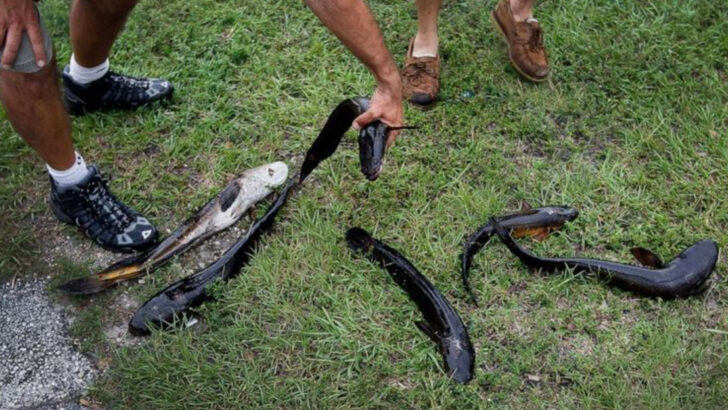It can slither across land, breathe air, and devour anything in its path. No, it’s not a movie monster—it’s a real fish. The Northern Snakehead has officially entered nightmare territory for U.S. waterways. This predator isn’t just surviving in ponds and rivers—it’s thriving. It can wriggle from one body of water to the next, wiping out native fish and throwing entire ecosystems into chaos. Maryland, Virginia, Delaware, and several other states are already in deep trouble. And with every rainy day or flooding stream, it pushes farther inland. Wildlife experts are scrambling, anglers are sounding alarms, and still… the snakehead moves. Where it goes next is anyone’s guess—but one thing’s for sure: once it’s in, it’s almost impossible to get out. Let’s break down where this invasive beast has been spotted, how it survives on land, and why stopping it now is critical.
Northern Snakehead
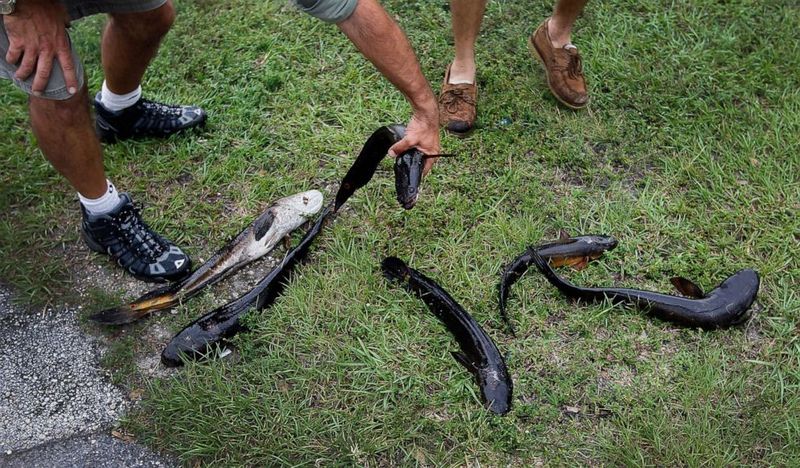
Imagine a fish that can slither across land as easily as it swims through water. The Northern Snakehead, native to Asia, is precisely that creature. With its sharp teeth and insatiable appetite, it poses a significant threat to local ecosystems. It can survive out of water for days, making it particularly adept at spreading. Its presence has been confirmed in nine U.S. states, causing alarm among wildlife officials. The snakehead is not just a fish; it’s an ecological menace that devours everything in its path. Vigilance and action are required to control this invasive species.
Maryland’s Snakehead Battle
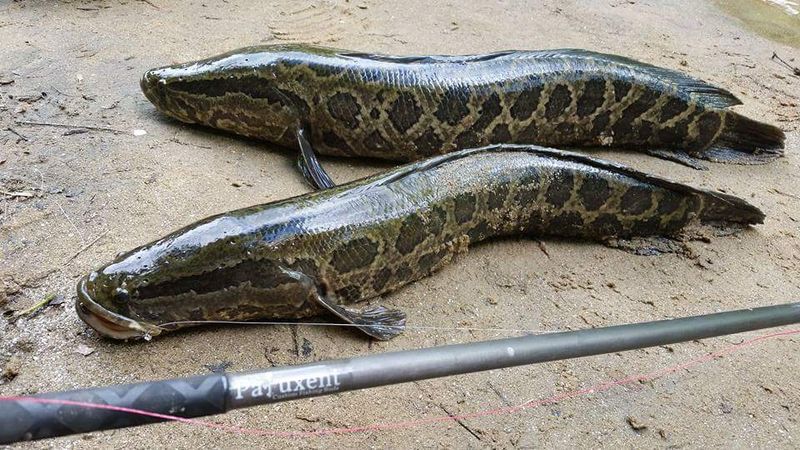
Maryland is on the frontline of the Snakehead invasion. With its numerous waterways, the state has become a hotspot for these fish. Local officials are working tirelessly to prevent the spread, using public awareness campaigns and fishing competitions to control their numbers. The Snakehead’s adaptability and resilience make containment challenging. Maryland’s anglers are encouraged to catch and report every Snakehead encountered. This vigilant approach is crucial in managing the threat. The battle against the Snakehead in Maryland is ongoing, and the state continues to lead efforts in combating this invasive predator.
Virginia’s Aquatic Challenge
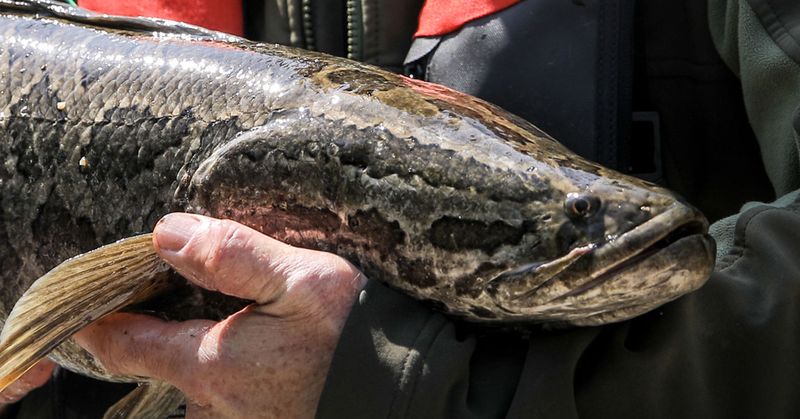
In Virginia, the Northern Snakehead has made a significant impact on local fisheries. Known for its aggressive behavior, it disrupts the balance of aquatic life, preying on native fish and competing for resources. Efforts are underway to educate the public and encourage the capture of these unwelcome visitors. Virginia’s waterways have become an arena for a complex struggle against this relentless invader. The state’s ecological balance hangs in the balance. The Northern Snakehead’s presence is a stark reminder of the challenges faced in preserving native species in the face of invasive threats.
Pennsylvania’s Predator Problem
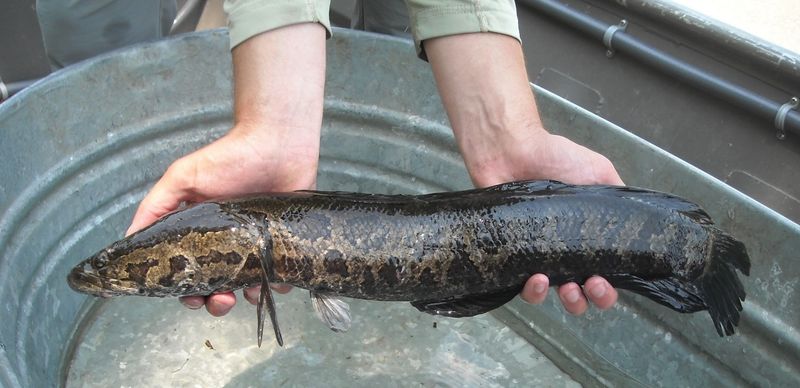
Pennsylvania’s waters are not immune to the encroaching Northern Snakehead. As these fish invade new territories, they threaten local biodiversity. The state’s fish and boat commission is actively involved in tracking and managing the spread of Snakeheads. Anglers play a pivotal role in this effort, encouraged to report sightings and remove any caught specimens. The fight against these predators is crucial for maintaining Pennsylvania’s aquatic health. This battle against the Snakehead is not just a local issue but part of a broader effort to protect the nation’s waterways from invasive species.
New York’s Unwanted Guests
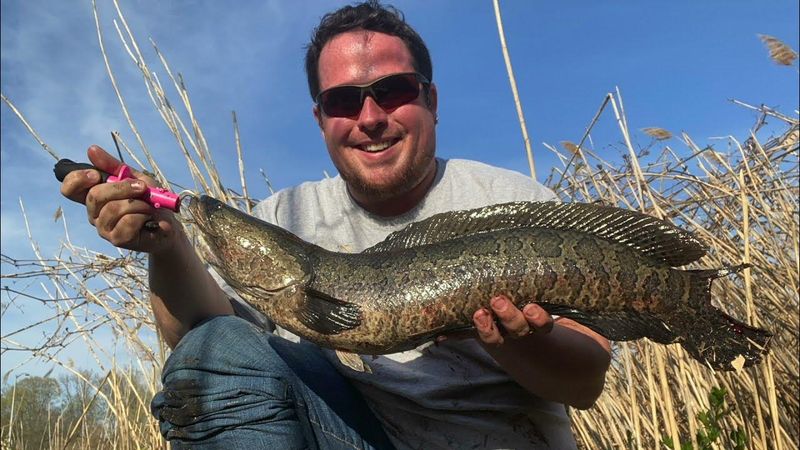
New York faces a persistent challenge with the Northern Snakehead fish. These unwelcome guests have infiltrated local waters, causing concern among environmentalists and anglers alike. The state is implementing strategies to control their population, including public outreach and targeted removal efforts. The Snakehead’s ability to thrive in diverse conditions makes eradication difficult. However, New York remains committed to preserving its aquatic ecosystems. The presence of Snakeheads serves as a sobering example of the impact invasive species can have on the environment, necessitating ongoing vigilance and action.
New Jersey’s Fishy Foe
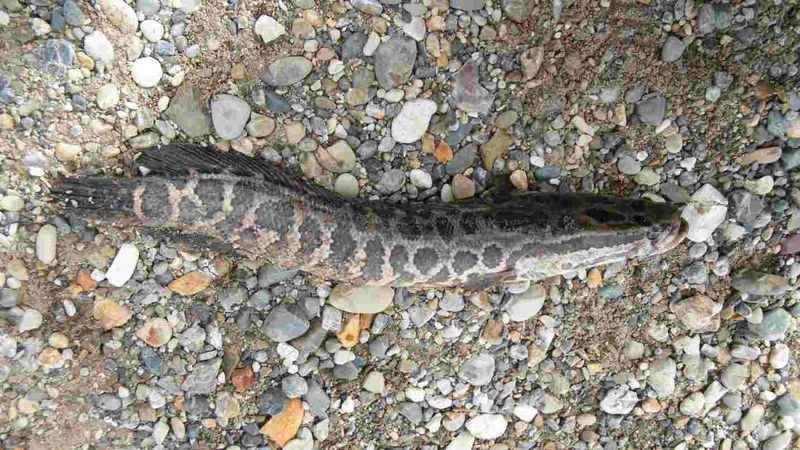
In New Jersey, the Northern Snakehead is causing ripples across local ecosystems. Known for its voracious appetite, this fish is a formidable foe to native species. Wildlife authorities are monitoring the situation closely, implementing measures to mitigate the threat. Public involvement is crucial in reporting and controlling the spread of these fish. The state is steadfast in its mission to protect its waters from this invasive menace. The Northern Snakehead’s presence in New Jersey underscores the challenges of managing invasive species and highlights the need for proactive conservation efforts to safeguard biodiversity.
Delaware’s Conservation Efforts
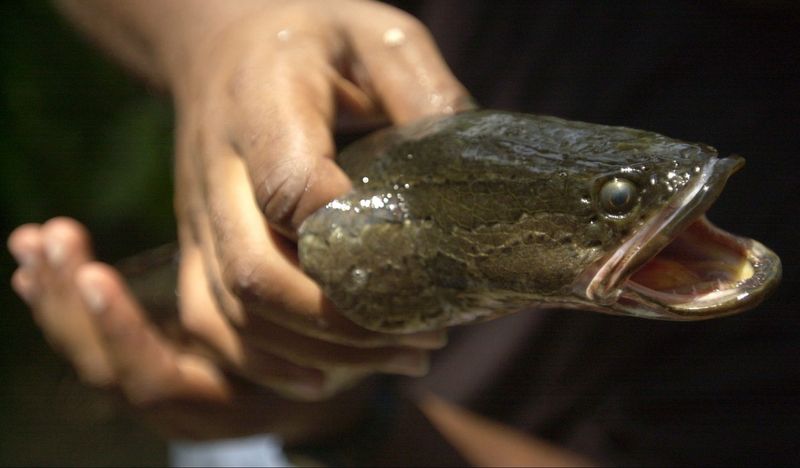
Delaware is actively engaged in conservation efforts to combat the Northern Snakehead invasion. The state’s waterways are under threat from this adaptable predator. Community involvement is key to these efforts, with local residents encouraged to participate in monitoring and management initiatives. Educational programs are in place to raise awareness about the dangers posed by the Snakehead. The state’s commitment to conservation is unwavering, reflecting a broader regional effort to address the spread of invasive species. Delaware’s actions serve as a model for other states grappling with similar ecological challenges.
Missouri’s Aquatic Invasion
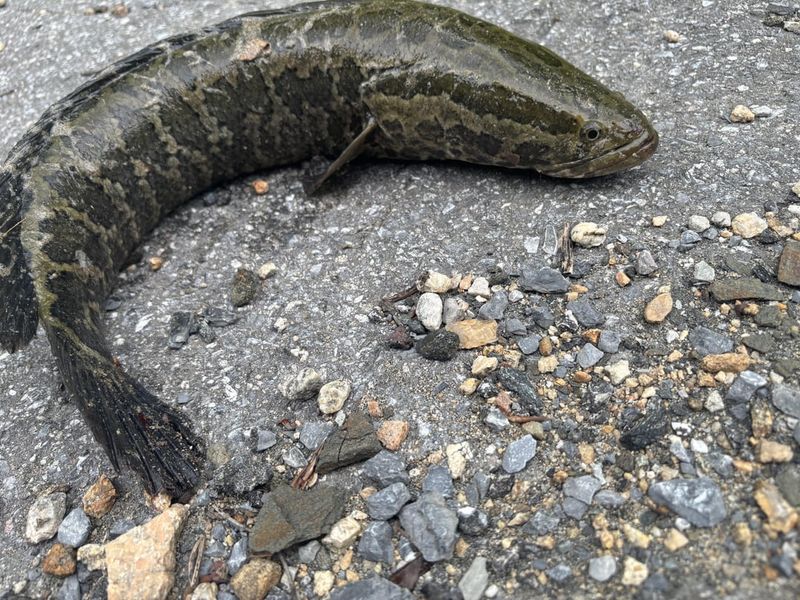
In Missouri, the arrival of this fish has left scientists puzzled. Its remarkable ability to walk on land adds a new dimension to aquatic invasions. Picture a creature that can traverse both water and soil, baffling locals and experts alike. This fish’s resilience and adaptability make it a formidable opponent to native species, disrupting the balance of Missouri’s waterbodies.
The state’s Department of Conservation is actively monitoring the situation, focusing on containment strategies to prevent further ecological damage. This fish has already altered the aquatic landscape, posing new challenges for conservationists.
Arkansas’ Ecological Challenge
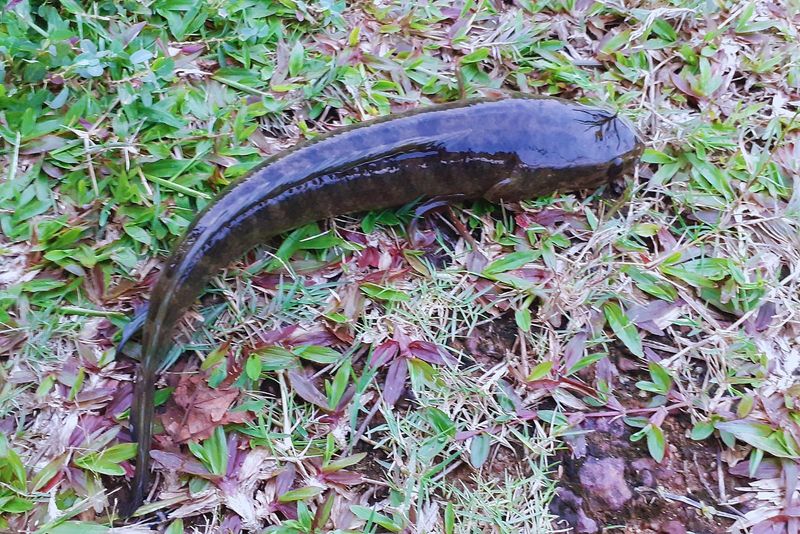
Arkansas faces a unique challenge with this fish’s presence. Its unusual adaptation to both land and aquatic environments raises eyebrows among scientists. Imagine a fish that strolls along riverbanks, leaving trails of curiosity and concern.
The impact on Arkansas’ ecosystems is profound, with native species threatened by this new competitor. Conservationists are racing against time to manage its spread and mitigate ecological harm.
This fish’s ability to adapt so seamlessly to diverse habitats has made it a focal point of study, as researchers seek solutions to control its population.
West Virginia’s Aquatic Invader
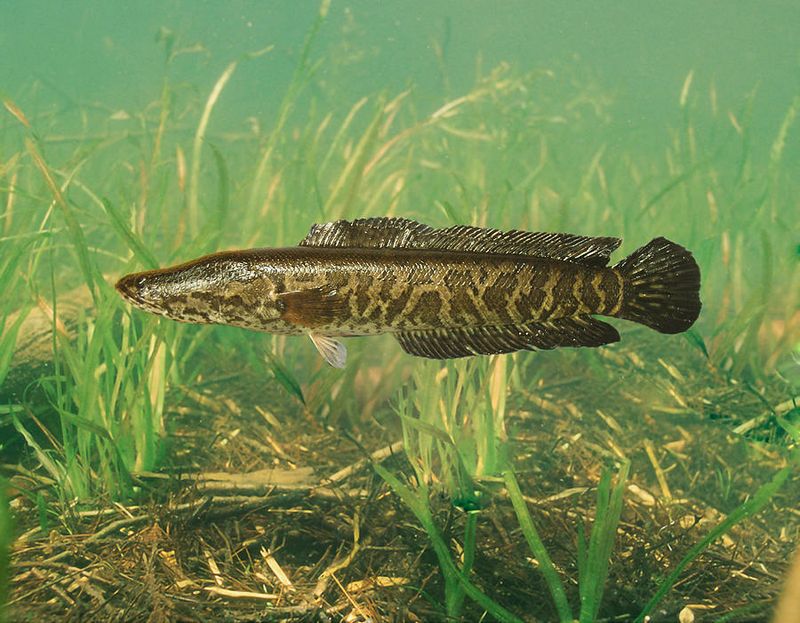
The creeping menace of the land-walking fish has made its way to West Virginia’s waterways. With habitats ranging from pristine streams to bustling rivers, these fish are challenging the balance of local ecosystems. Historically, West Virginia’s aquatic biodiversity thrived, but now it faces disruption.
The fish’s ability to survive on both land and water is not just an ecological oddity; it’s a game changer. West Virginia communities are actively seeking solutions, with efforts ranging from public awareness campaigns to local fishing contests designed to curb its numbers.
How this battle unfolds remains to be seen, but one thing is certain: West Virginia’s aquatic invader is a formidable opponent.

